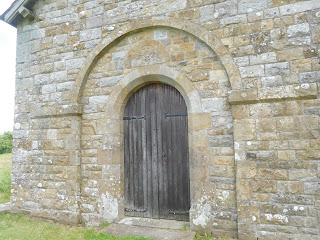Not everyone's cup of tea, perhaps, but faced with a wet and windy walk we decided to do some exploring using Mike Salter's book "Old Parish Churches of Cumbria".
Click on any of the pictures to enlarge them.
First we drove to Torpenhow, a village near Wigton. The parish church, built 1120, was large with massive pillars and really impressive Norman arches - but very dark. The deep window embrasures show how thick the walls are - this building made use of stone from Old Carlisle, a Roman settlement.
At the top of the pillars, grotesque, Romanesque carvings showing the damned writhing in torment on one side and, on the other, the virtuous rejoicing at being spared. Dark interiors do not make good photos but this was an atmospheric space, surprising for a small country parish.
Next, a complete contrast in the abandoned old church at Ireby. It is literally across a field and buried in unmown grass, but not a ruin and still maintained.
Only the chancel still exists. Two columns which once supported the nave were recovered from the village where they were being used as gateposts.
Inside, this carved stone dated 1606, commemorating a gentleman who served Elizabeth, James and Charles.
The interior here appears more traditional than Torpenhow - until you look up. Then you see the very impressive high barrel-vaulted roof, following, apparently, a style used in Provence.
A traditional stained glass window.
And a modern one made by a local maker who also made the one in Caldbeck church. Notice the Good Shepherd dressed as a Cumbrian, and the very apt wording.
All of these churches were originally dual-purpose, needing to be defensive structures against raiding parties from the North.
We can see much more church tourism in our future.
.JPG)






.JPG)


.JPG)
No comments:
Post a Comment